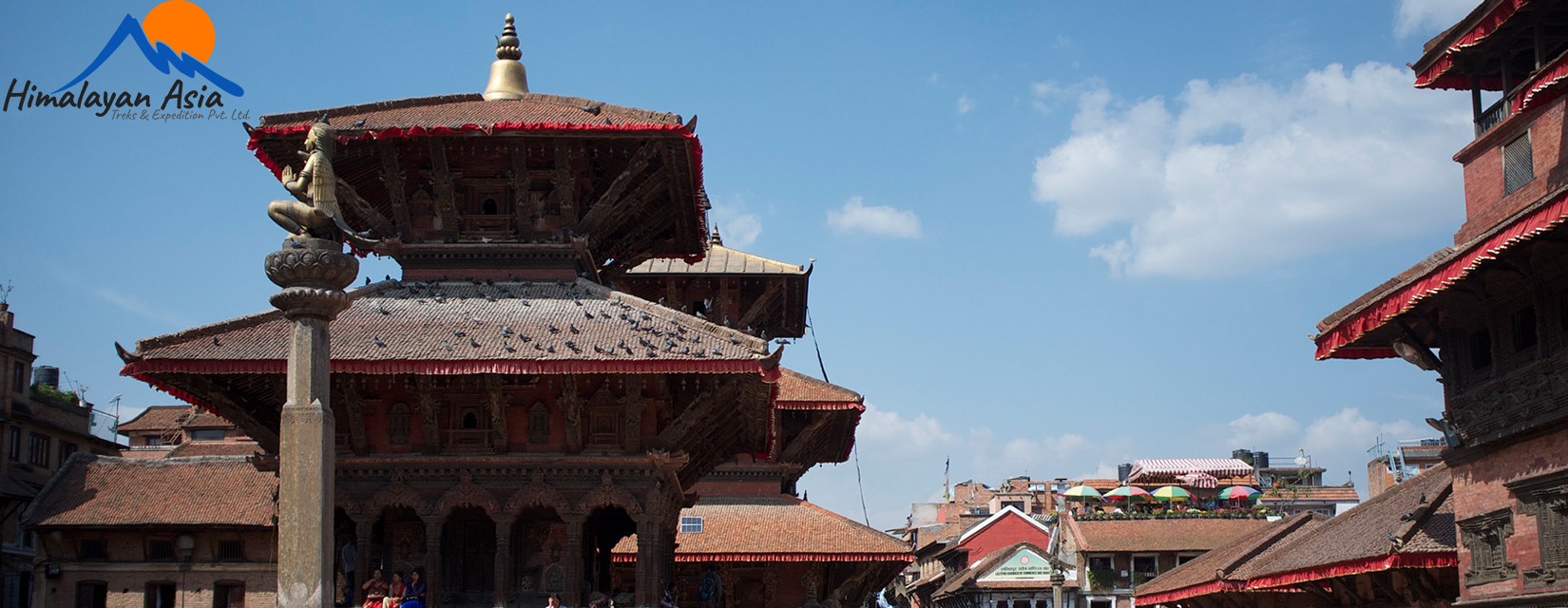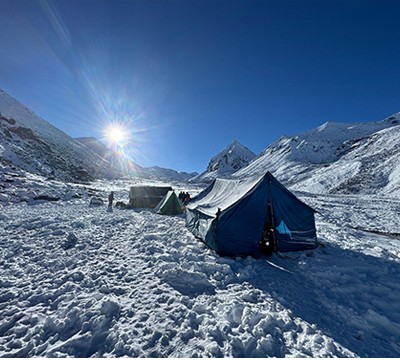Nestled within the Himalayan region, Nepal's UNESCO World Heritage Sites include both cultural and natural wonders. From ancient temples and palace complexes to lush national parks and towering mountains, these sites collectively paint a vivid picture of the country's cultural evolution and its breathtaking natural beauty.
In this series, we will explore ten of Nepal's UNESCO World Heritage Sites in depth, delving into their historical contexts, architectural marvels, and the stories they hold. We will travel through time and across landscapes to discover the enchanting allure of these sites, and gain a deeper appreciation for Nepal's role in global heritage preservation.
Join us on this journey as we embark on a virtual tour of Nepal's UNESCO World Heritage Sites, celebrating the intricate tapestry of its cultural and natural heritage that continues to captivate and inspire visitors from around the world.
1) Kathmandu Durbar Square
Kathmandu Durbar Square is a UNESCO World Heritage Site located in the heart of Kathmandu, the capital city of Nepal. It is a complex of ancient palaces, temples, courtyards, and streets that were once the royal seat of the Kingdom of Nepal.
The square is surrounded by four main temples, namely Taleju Temple, Jagannath Temple, Kal Bhairav Temple, and Kumari Ghar. Taleju Temple is the tallest and the most important temple in the square, which was built in the 16th century by King Mahendra Malla. Jagannath Temple is famous for its erotic carvings and is dedicated to Lord Vishnu. Kal Bhairav Temple is dedicated to Lord Shiva, and it houses a statue of the fearsome Bhairava. Kumari Ghar is the residence of the living goddess Kumari, who is a young girl believed to be the incarnation of the Hindu goddess Taleju.
The square also has several other historical buildings, including the Hanuman Dhoka Palace, which was the former royal palace of the Malla and Shah kings. The palace has a museum that displays artifacts and objects from the royal era, including thrones, jewelry, and weapons. Other notable buildings in the square include the Kumari Chowk, Kasthamandap, and Gaddi Baithak.
Kathmandu Durbar Square is a popular tourist attraction in Nepal and attracts visitors from all over the world who come to admire the unique blend of Hindu and Buddhist architecture and the rich cultural heritage of the city.
2) Bhaktapur Durbar Square
Bhaktapur Durbar Square is a UNESCO World Heritage Site located in the city of Bhaktapur in Nepal. It is a collection of temples, shrines, and palaces that showcase the architectural and artistic excellence of the Newar people, who were the predominant inhabitants of the Kathmandu Valley.
The square is surrounded by traditional buildings and is famous for its intricate woodcarvings, stone sculptures, and metalwork. Some of the prominent structures in the square include the 55-Window Palace, the Golden Gate, the Nyatapola Temple, and the Bhairava Nath Temple.
The 55-Window Palace was built in the 15th century and is a stunning example of the traditional Nepali palace architecture. The Golden Gate is an ornate entrance to the palace, and the Nyatapola Temple is a five-storied pagoda-style temple that is one of the tallest in Nepal. The Bhairava Nath Temple is dedicated to the fierce manifestation of Lord Shiva and is known for its intricate woodcarvings.
Bhaktapur Durbar Square is not just a cultural and historical treasure but also a living heritage that continues to be an important religious and cultural site for the Nepali people. It attracts a large number of visitors every year who come to marvel at its beauty and soak in its rich cultural heritage.
3) Patan Durbar Square:
Patan Durbar Square is a UNESCO World Heritage Site located in the city of Patan (also known as Lalitpur), which is part of the Kathmandu Valley in Nepal. It is one of the three Durbar Squares in the Kathmandu Valley, the other two being in Kathmandu and Bhaktapur.
Patan Durbar Square is known for its rich cultural heritage and stunning architecture. The square is home to numerous temples, shrines, palaces, and statues that reflect the artistic and architectural achievements of the Malla dynasty, which ruled the Kathmandu Valley from the 12th to the 18th century.
Some of the notable attractions in Patan Durbar Square include the Krishna Temple, the Bhimsen Temple, the Golden Temple, and the Sundari Chowk. The square also features numerous intricately carved wooden and stone structures, including the 17th-century Taleju Bell and the 15th-century Keshav Narayan Chowk.
Visitors to Patan Durbar Square can also witness traditional Nepali architecture and city planning, as well as experience the vibrant local culture and daily life of the people in the area. Overall, Patan Durbar Square is a must-visit destination for anyone interested in Nepal's rich history and cultural heritage.
4) Swayambhunath Stupa (also known as Monkey Temple):
Swayambhunath Stupa, also known as the Monkey Temple, is a Buddhist stupa located in Kathmandu, Nepal. It is one of the most sacred Buddhist sites in Nepal and is believed to have been established more than 2,000 years ago.
The stupa is located on a hilltop in the Kathmandu Valley and can be seen from miles away. It is surrounded by a complex of other temples, shrines, and monasteries, and is known for its vibrant and colorful atmosphere.
The stupa is believed to have been built by the legendary emperor Ashoka in the 3rd century BCE, although its current form is attributed to King Vṛsadeva in the 5th century CE. It has undergone several renovations and additions over the centuries, and today it stands as a beautiful example of Buddhist architecture and art.
The stupa is adorned with prayer flags, colorful prayer wheels, and other Buddhist symbols and icons. It is also home to a large population of monkeys, which are considered to be sacred by many Nepalese people.
Visitors to Swayambhunath Stupa can climb the 365 steps to reach the top of the hill and explore the various temples and shrines surrounding the stupa. The stupa and its surroundings are considered to be a UNESCO World Heritage Site, and it is a popular destination for tourists and pilgrims alike.
5) Boudhanath Stupa:
Boudhanath Stupa is a UNESCO World Heritage Site located in Kathmandu, Nepal. It is one of the largest stupas in the world and is a major pilgrimage site for Buddhists. The stupa is also known as Khāsti Chaitya, and is believed to have been built in the 14th century.
The stupa is a dome-shaped structure that is surrounded by prayer wheels, prayer flags, and small shrines. At the top of the dome is a square tower with eyes painted on all four sides, which is believed to represent the all-seeing eyes of Buddha. The stupa is also surrounded by shops, restaurants, and monasteries.
Boudhanath Stupa is a center of Tibetan Buddhism in Nepal and is home to many monasteries, including the Karmapa's monastery, which is the seat of the Karmapa, the head of the Karma Kagyu lineage of Tibetan Buddhism. The stupa is also an important site for Newari Buddhists, who believe that the stupa was built by a mythical creature called a makara.
The stupa was damaged in the 2015 earthquake that struck Nepal, but has since been repaired and restored. It remains a popular tourist destination and pilgrimage site for Buddhists from around the world.
6) Pashupatinath Temple:
Pashupatinath Temple is a famous Hindu temple located in the capital city of Nepal, Kathmandu. It is considered one of the most sacred temples dedicated to Lord Shiva in the world and is a UNESCO World Heritage Site.
The temple is situated on the banks of the Bagmati River and was built in the 5th century. The current temple structure was built in the 15th century and has a distinctive pagoda-style architecture with a golden roof and silver doors.
The temple complex is spread over a large area and includes numerous smaller temples and shrines. It is a popular destination for Hindu pilgrims from all over the world, who come to offer prayers and seek blessings from Lord Shiva.
The temple is also known for its intricate carvings and sculptures, which are a testament to the skill and craftsmanship of Nepalese artists. The temple attracts a large number of tourists every year, who come to witness the rich cultural heritage and traditions of Nepal.
One of the unique features of the temple is the cremation site on the banks of the Bagmati River, which is considered holy by Hindus. It is believed that those who are cremated here are granted instant access to heaven.
Overall, the Pashupatinath Temple is a must-visit destination for anyone interested in Hinduism, spirituality, and Nepalese culture.
7) Changu Narayan Temple:
Changu Narayan Temple is a Hindu temple located in the hilltop village of Changu Narayan in Bhaktapur, Nepal. It is one of the oldest temples in Nepal, dating back to the Licchavi period (4th to 9th century AD) and is a UNESCO World Heritage Site. The temple is dedicated to Lord Vishnu, and the main deity is a four-armed idol of Vishnu in a standing position.
The temple's architecture is a blend of different styles, including the pagoda style and the shikhara style, with intricate carvings and statues of various gods and goddesses. The temple is surrounded by a beautiful forest, and the hilltop location provides stunning views of the surrounding landscape.
Changu Narayan Temple is a significant pilgrimage site for Hindus, who come from all over Nepal and India to worship at the temple. The temple also attracts tourists interested in the rich history and cultural heritage of Nepal.
8) Lumbini, the Birthplace of Lord Buddha:
Lumbini is a sacred pilgrimage site located in the Rupandehi District of Nepal, which is known as the birthplace of Lord Buddha. It is believed that Prince Siddhartha Gautama, who later became Lord Buddha, was born in Lumbini around 623 BC.
Lumbini is now a UNESCO World Heritage site and attracts thousands of visitors every year from all over the world. The site is home to several ancient monuments and temples, including the famous Maya Devi Temple, which is built on the exact spot where Lord Buddha was born. The temple houses a stone sculpture of Maya Devi, the mother of Buddha, giving birth to him.
Other notable attractions in Lumbini include the Sacred Garden, which is home to the Ashoka Pillar, a pillar erected by Emperor Ashoka in the 3rd century BC, and several monasteries built by various Buddhist countries around the world, such as China, Japan, Thailand, and Myanmar.
Visitors to Lumbini can also participate in meditation and spiritual practices at various monasteries and meditation centers in the area. Overall, Lumbini is a must-visit destination for anyone interested in Buddhism and its rich cultural heritage.
9) Sagarmatha National Park (home to Mount Everest):
Sagarmatha National Park is a protected area located in the Solu-Khumbu district of Nepal. It was established in 1976 and was designated as a UNESCO World Heritage site in 1979. The park covers an area of 1,148 square kilometers and is home to many unique and rare species of flora and fauna. To explore Sagarmatha National Park , we suggest choose Everest Base Camp Trek.
The park is named after Mount Everest, which is known as Sagarmatha in Nepali. Mount Everest, the highest peak in the world, is located within the park's boundaries, and the park is a popular destination for trekkers and mountaineers.
The park is known for its diverse vegetation, ranging from subalpine to alpine plants, and is home to over 118 species of birds and several rare species of mammals, including the snow leopard and red panda. The park also protects several Sherpa villages, which are known for their unique culture and traditions.
The park has a network of well-maintained trekking trails, which provide visitors with stunning views of the Himalayas, including Mount Everest. The park is also home to several sacred sites, including monasteries and chortens, which are important pilgrimage destinations for Buddhists.
Visitors to Sagarmatha National Park are required to obtain a permit, which is available in the town of Namche Bazaar, the main gateway to the park. The park is open year-round, but the best time to visit is from March to May and from September to November, when the weather is dry and the skies are clear. To exploring Sagarmatha National Park, you can do Everest Base Camp Trek.
10) Chitwan National Park:
Chitwan National Park is a protected area in Nepal, located in the southern part of the country. It was established in 1973 and covers an area of 952.63 square kilometers. The park is known for its rich biodiversity and is home to a wide range of flora and fauna, including tigers, rhinoceroses, elephants, crocodiles, and many species of birds.
Chitwan National Park is listed as a UNESCO World Heritage site and is one of the most popular tourist destinations in Nepal. Visitors can go on jungle safaris, elephant rides, bird-watching tours, and cultural tours to nearby villages. The park is also known for its conservation efforts and for working closely with local communities to promote sustainable tourism.
In recent years, the park has faced some challenges, including poaching, habitat destruction, and conflicts with local communities over land use. However, efforts are being made to address these issues and to ensure the long-term sustainability of the park and its wildlife.



